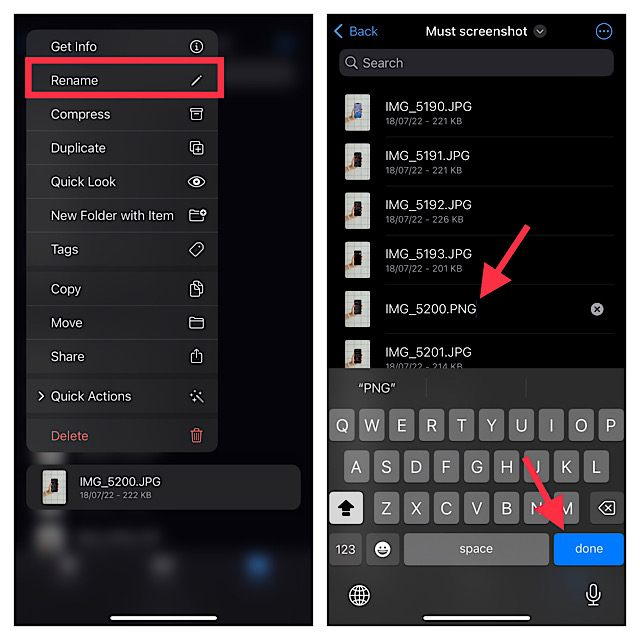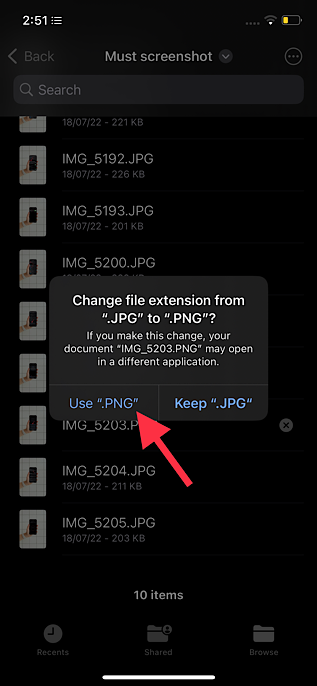What is File Extension and Why do You Need to Change It?
For those unfamiliar, a file extension is basically a string of characters that are attached to a file name. It usually precedes a full stop and indicates the format of the file. Now, the question is why do you need to change the file extensions? Well, there are multiple reasons why you may need to change file extensions. For instance, you may want to fix a file that is showing a wrong extension or maybe you want to change the format of a file to make it universally compatible. Not to mention, it can also come in super handy when you may want to use an unsupported file format. It not only saves your time but also ensures you do not have to take the tedious route of converting the file formats. That’s the reason why it has long been an essential tool for file management.
Edit File Extensions in Apple Files App on iPhone and iPad
- First off, open the Apple Files app on your iPhone or iPad.
- Now, head over to the file which extension you would like to change.
- Next, long press on the file and choose Rename in the menu.
- Next up, remove the existing extension and add a new one depending on your needs.
- After entering the new extension, tap on Done at the bottom right corner of the keyboard.
- Now, a popup will appear on the screen saying something like, “If you make this change, your document ‘Name’ may open in a different application.” Make sure to tap on Use “New extension” in the popup to confirm the action. Pretty simple, isn’t it?
Unable to Change File Extensions on your iPhone and iPad? Here is the Fix!
It’s worth pointing out that the compatible file types such as .pdf, mp4, .jpg are originally hidden in the Apple Files app. Hence, it may not show the option to replace the existing extension. So, how do you unhide the file types? Well, there is a pretty effective trick that gets the job done.
- To get going, open the Apple Files app on your iPhone or iPad > navigate to the file in question.
- Now, you need to tap on the triple-dot icon at the top right corner of the screen.
- Next, choose View Options in the contextual menu.
- Finally, tap on Show All Extensions and you are good to go! Going forward, the Files app will start showing extensions for all file types. Hence, you will now be able to change the file extensions on your iOS or iPadOS device without any pain.
Wrap up…
There you have it! So, these are the quick ways you can manage the file extensions on your iDevice. While I’m quite pleased with this feature, I would like to make one subtle change. It would be better if Apple made the Files app show extensions by default. The hidden extensions not only create confusion but becomes a hindrance to editing the extensions. What do you have to say about my suggestion? Make sure to share your invaluable feedback with us.


